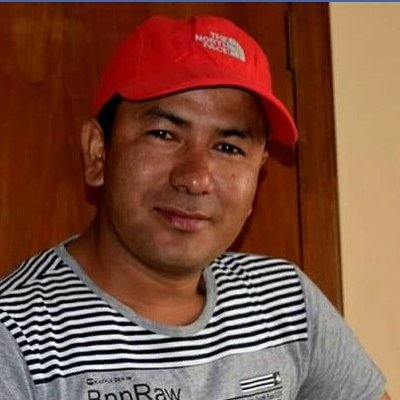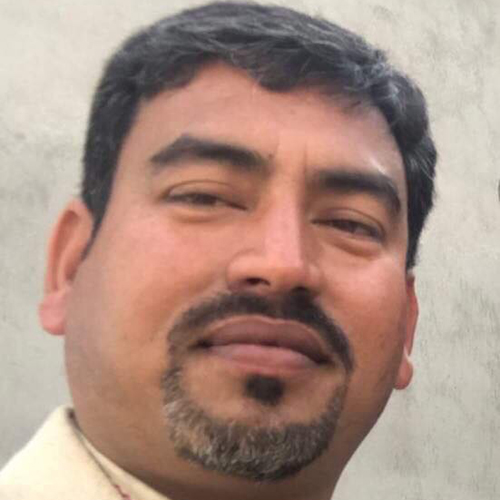Sudurpaschim Province
Freedom for Haliyas a long shot even after 14 years of supposed emancipation
A good number of former bonded farm labourers in Sudurpaschim and Karnali find themselves in the dredges of poverty and privation.
Basant Pratap Singh & Arjun Shah
Jhima Luhar, 68, is a Haliya (bonded farm labourer) still paying off the loan that trickled down generations through her husband’s family.
“We would have been able to live a happy life had the government freed us from the debt taken by our forefathers, provided land plots and helped us build a house,” said Jhima, a resident of Sireta in Thalara Rural Municipality-9 of Bajhang district. “But nothing has happened so far. I don’t think it will ever happen.”
The grandfather of Jhima’s husband had borrowed some money from a local money lender years ago. Her husband, Bahadure Luhar, who was a witness to the transaction, died 28 years ago. Today, Jhima’s family owes Rs200,000 to the money lender. “My son Bikash has been ploughing our landlord’s fields to pay interest on the loan,” said Jhima.
Sireta, a Dalit settlement around 20 km south of Bajhang district headquarters Chainpur, has 88 families who still toil for their landlords to repay the loans that were borrowed generations ago.
The government does not recognise Jhima and others from her village as freed Haliyas since the destitute families did not figure in the government statistics of those held in bonded labour.
The government paperwork identifies as many as 79 families from Thalara-9 as freed Haliyas. Their identification was verified by the government authorities. But there is neither the physical presence of these families in the village nor any evidence that supports their existence in the village anytime in the past.
Githe Oda, Ram Bahadur Parki, Gajam Sarki, and Bhale Kami, among others, are on the roster of freed Haliyas verified by the government authorities. “But there has never been anyone here with those names,” said Jhima.

“I rushed to Chainpur upon hearing that relief meant for Haliyas had arrived in the district,” said Jhima. “But government officials turned me back saying that I wasn’t on the list of freed Haliyas. The relief was given to people who have been our oppressors for so many years because apparently their names have been put on this list of freed Haliyas.”
The government declared the emancipation of Haliyas on September 6, 2008. The declaration has legally banned enslaving Haliyas on any pretext. The government soon announced various programmes to pay off the loans the freed Haliyas had taken from the landlords leading to the former’s bondage, and to rehabilitate them. The following year, the government authorities started collecting statistics and information on the freed Haliyas.
Fourteen years since their supposed emancipation, a good number of freed Haliyas in Sudurpaschim and Karnali provinces find themselves in the dredges of poverty and privation.
The freed Haliyas say the government has yet to make good on the promises made to them more than a decade ago.
A meeting held two years after the government emancipation programme under the chairmanship of Chiranjibi Thapa, then assistant chief district officer and coordinator of freed Haliyas district data collection committee in Bajhang, certified a total of 2,848 freed Haliyas in the district and recommended their rehabilitation. The verified list incorporated 79 families of freed Haliyas who did not exist but left out 118 genuine Haliya families of Ward No 9 of Thalara Rural Municipality.
While collecting the preliminary data of the freed Haliyas, the enumerators were provided with an allowance of Rs20 per family for bringing details of freed Haliya families. It is suspected that the enumerators doctored the forms without reaching out to the families just to earn some extra money. “It seems that the enumerator/s did not go to Sireta but randomly filled up the forms,” said Krishna Bahadur Bohara, chief of the district land revenue office in Bajhang.

The genuine freed Haliyas lament that the government does not know who the real Haliyas are. Setya Luhar, aged 58, of Sireta has been working as a Haliya since he was 12. But his name is not documented as Haliya or freed Haliya.
Setya has 10 members in his family and a loan of around Rs500,000. So he ploughs the landlord’s fields while his wife collects fodder, harvests food grains like paddy, wheat, maize and does other agricultural works. They receive around one kilogram of rice per day.
“We have to be satisfied with whatever the landlord gives us. We cannot claim to deserve more wages. The landlord adds the interest to the principal amount if we fail to work for even a single day,” said Setya. “This is my life. I am deprived of the benefits that the government provides to the freed Haliyas. I visited the ward office, rural municipality office and the district headquarters several times. But I could not find my name on the list. We don’t know who came to the village to collect names and when. Those who are on the name list are not in the village.”
Sireta’s story is playing out across several settlements in Bajhang where people are still working as Haliyas but do not feature on the list of freed Haliyas prepared by the government. They eke out a living as fieldhands for their landlords. “Even the land where this hut was built is not ours. We have nothing to our name. We have to live with the food grains provided by the landlords. Our children go hungry if the landlords do not give us food,” said Amita Damai of Lwada in Chhabis Pathibhera Rural Municipality.
There are around 15 such settlements in Bajhang where the villagers have been ploughing for the landlords to repay the loans their father and grandfather took years ago.
The mismanagement in the identification of Haliyas and their data verification is not only limited to Bajhang. Hundreds of people in the nine districts of Sudurpaschim Province and three districts of Karnali Province are still working as Haliyas for their livelihood even after the abolishment of the Haliya system 14 years ago.

Identification of the freed Haliyas and their rehabilitation are under the federal Ministry of Land Management, Cooperatives and Poverty Alleviation. Even the ministry does not have the actual data on the freed Haliyas and their rehabilitation. “We have not recorded the number of freed Haliya families that are included in the rehabilitation package,” said Rehaman Singh Rana, the section officer at the ministry.
The ministry formed a committee under the chairmanship of Shyam Shrestha last year to study the condition of freed Haliyas, Kamaiyas, Kamlahari and Haruwa-Charuwa. According to the report, a total of 12,231 verified freed Haliya families of Sudurpaschim 1,055 were excluded from the rehabilitation package provided by the government.
The government has classified the freed Haliyas into four different categories—those with neither land nor house are included in Group A, while group B includes those who have houses but do not own land. Similarly, those who own land but do not have a house have been categorised in group C and group D includes those whose houses need repairs.
The government provided Rs200,000 to buy a land plot and Rs350,000 in the hilly region and Rs225,000 in Tarai to build a house to each freed Haliya family categorised in group A. Each household under group B was provided Rs200,000, while Rs 350,000 in the hilly region and Rs 225,000 in Tarai were provided to each household grouped in C. Likewise, each family under group D was provided Rs125,000 to repair their homes.
Manbir Lohar of Budhiganga Municipality-1 in Bajura is recognised by the government at least on paper as a freed Haliya but he returned to the old practice as the Haliya rehabilitation programme did not support his livelihood.
“I have an identity card as a freed Haliya but I couldn’t make a living to support my family so I went back to being a Haliya,” said Manbir. “The government gave us the minimum and left us to fend for ourselves but we don’t know what else to do except go back to being a Haliya.”




 12.99°C Kathmandu
12.99°C Kathmandu











%20(1).jpg&w=300&height=200)

